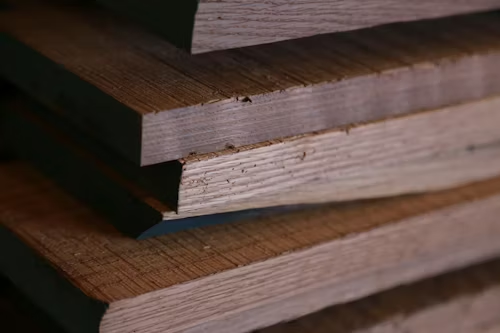Did you know that a piece of furniture you buy today might not be designed to last a decade?
With Australia importing billions of dollars worth of flat-pack and mass-produced furniture each year—often made from compressed particles and synthetic materials—it’s easier than ever to end up with a piece that sags, chips, or falls apart after a few moves.
Data from the Department of Agriculture, Fisheries and Forestry shows that in the 2021-22 period, Australia imported over $3.4 billion worth of furniture, mattresses, and bedding, primarily from large-scale manufacturing nations.
But what if you could buy furniture that actually appreciates in value and character?
The good news is that Australia has a thriving industry crafting exceptional, durable pieces from both native and sustainable imported timbers.
By learning a few key signs of quality, you can confidently spot the difference between a cheap import and a cherished heirloom, making a smarter investment for your home and our environment.
Here is your essential numbered guide to spotting the good stuff and avoiding the junk.
1. Understand the “Wood” It’s Made From
This is the most critical first step. The terminology can be deceptive.
- Solid Wood: This means the core material is lumber, not a manufactured board. It is strong, durable, and can be refinished sanded and refinished decades later. High-quality pieces use select grades of wood with consistent grain and minimal knots.
- Veneer: Don’t dismiss veneer! High-quality veneer involves a thin layer of prised, beautiful wood (like oak, walnut, or cherry) glued onto a core of solid, but less expensive, wood or high-density board. This is a traditional and respected technique that allows for stunning grain matching across a large piece and is very stable. The problem is when veneer is used to disguise a cheap particleboard core.
- Engineered Wood (Particleboard, MDF, Chipboard): This is the biggest red flag for low quality. These are made from wood chips, dust, and resin pressed together. They are heavy, prone to chipping, do not hold screws well, and are severely damaged by moisture. They are often covered with a photographic layer (a “printed wood grain”) or a very thin, low-quality veneer. You can often spot these by examining the edges and corners for seams or chipping.
2. Examine the Joinery: The Bones of the Furniture
How the pieces of wood are connected is the true test of quality. Avoid anything that relies solely on glue, staples, or visible nails.
- High-Quality Joinery: Look for traditional techniques that indicate skill and longevity. Dovetail joints in drawers are a hallmark of quality—they are interlocking and incredibly strong. Mortise and tenon joints (a peg inserted into a hole) are used in chair and table frames for unmatched durability. Wood dowels are also a good sign when used in conjunction with glue.
- Low-Quality Joinery: Be wary of butt joints (pieces simply glued end-to-end), staples, or corner brackets.
- The Ultimate Test: Pull open a drawer on a chest. Look at the corners. If you see a series of interlocking, fan-shaped joints, you’ve found dovetails. If you see stapled or glued corners, or the tell-tale signs of cam locks (the metal hardware that allows for “some assembly required”), walk away.
3. Assess the Weight and Stability
Pick it up, shake it, and sit on it (if it’s a chair). Quality timber outdoor furniture has a substantial, reassuring heft. Cheap, hollow-core or particleboard furniture feels light and insubstantial. Test for stability by placing a hand on a table or desk and rocking it gently. A well-built piece should not wobble or twist. For chairs, sit down and shift your weight; listen for creaks or groans, which indicate weak joints.
4. Look at the Backs, Bottoms, and Insides
Craftsmanship is in the details you don’t immediately see.
- Drawers: Run your hand inside the drawer. It should feel smooth, not rough. The bottom should be made from a solid wood panel, not flimsy cardboard or thin plywood. It should glide smoothly on wooden or metal runners without wobbling.
- Back Panels: The back of a cabinet or bookcase should be a solidly constructed panel, properly set into a groove in the frame, not just nailed or stapled on.
5. Scrutinise the Finish
A good finish enhances the wood’s natural beauty and protects it.
- High-Quality Finish: The surface should feel smooth to the touch, not sticky or plasticky. The colour should be even, and the grain of the wood should be visible beneath it. On stained pieces, check that the colour is consistent on all surfaces, including edges and hidden parts.
- Low-Quality Finish: A thick, opaque, plastic-like coating that obscures the grain is often used to hide inferior wood or mismatched panels. Peek underneath the piece; if the finish is missing or drastically different, it’s a sign of corner-cutting.
6. Check the Hardware
While often overlooked, hardware is a sign of attention to detail. Drawer pulls and knobs should feel substantial and be securely attached. On high-end pieces, hinges are often solid brass or brushed nickel and are inset (mortised) into the wood for a seamless look. Drawer runners should be smooth and quiet.
Investing time in learning these signs will save you money and heartache. High-quality timber furniture may carry a higher initial price tag, but its value lies in its longevity, beauty, and timeless appeal. It’s not just a purchase; it’s a legacy.




